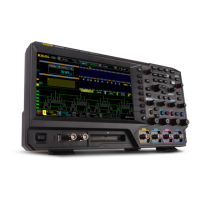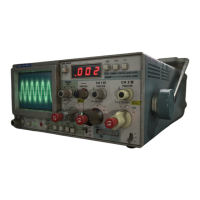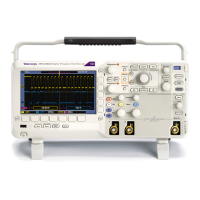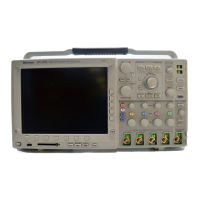Theory of Operation
Module Overvi
ews (MSO70000/C Series)
Module overviews describe the basic operation of each functional circuit block.
(See Figure 2-3 on page 2-9.)
A Microsoft Windows processor system is the primary controller of the instrument.
The instrument features a flat-panel display, a transparent touch screen, and a
front-panel with direct access to commonly used instrument functions. You can
also make complete use of the instrument with a mouse and keyboard.
Input Signal Path
An analog signal enters the instrument through a connection to the input connector
on the front panel.
Acquisition Board. The acquisition board conditions the input signals and
converts them to digital signals, then processes the data into a form that is handled
by the display system. The acquisition system includes the multi-source trigger
system, a timebase, and acquisition control circuitry, as well as a calibration
reference system for internal calibration purposes. The a cquisition board is
located in the bottom compartment of the instrument. All input channels feature
a probe interface system with the ability to recognize the probe type for proper
unit display and for calibration out to the probe tip.
Processor System. The processor system contains a processor board with
microprocessor that controls the entire instrument. The basic configuration
supports input channels, provides an external trigger input, a trigger output, and a
probe compensation output.
Each acquisition channel is equipped with a processor that uses its own host
interface which communicates with the command interface processor.
MSO Module. The MSO module contains a digital acquisition system and a word
recognizer. This module processes digital signals obtained by the 17-channel
Logic Probe (16 data channels, 1 Clk/Q channel). The logic channels from the
front panel are applied to the word recogniz er, and are also routed to the analog
acquisition board. The MSO module applies each channel to three p aths:
An analog path, which goes to an analog multiplexer that selects any four o
f
the 1 7 logic probe channels to use for the iCapture display.
A digital p ath, which acquires a digitized version of each of the channels and
stores it in memory.
A digital WORD trigger path, where the user can specify a trigger condition
that will trigger the oscilloscope. This trigger condition, or word, can consist
of any boolean combination (using AND, NAND, OR, and NOR) of the 16
digitally acquire
d channels. In addition, the Clk/Q channel can be used to
qualify the WORD trigger.
The word trigger pattern values are 0, 1, and DON’T CARE.
2–6 MSO70000/C, DSA70000B/C, DPO70000B/C, DPO7000, MSO5000, DPO5000 Series

